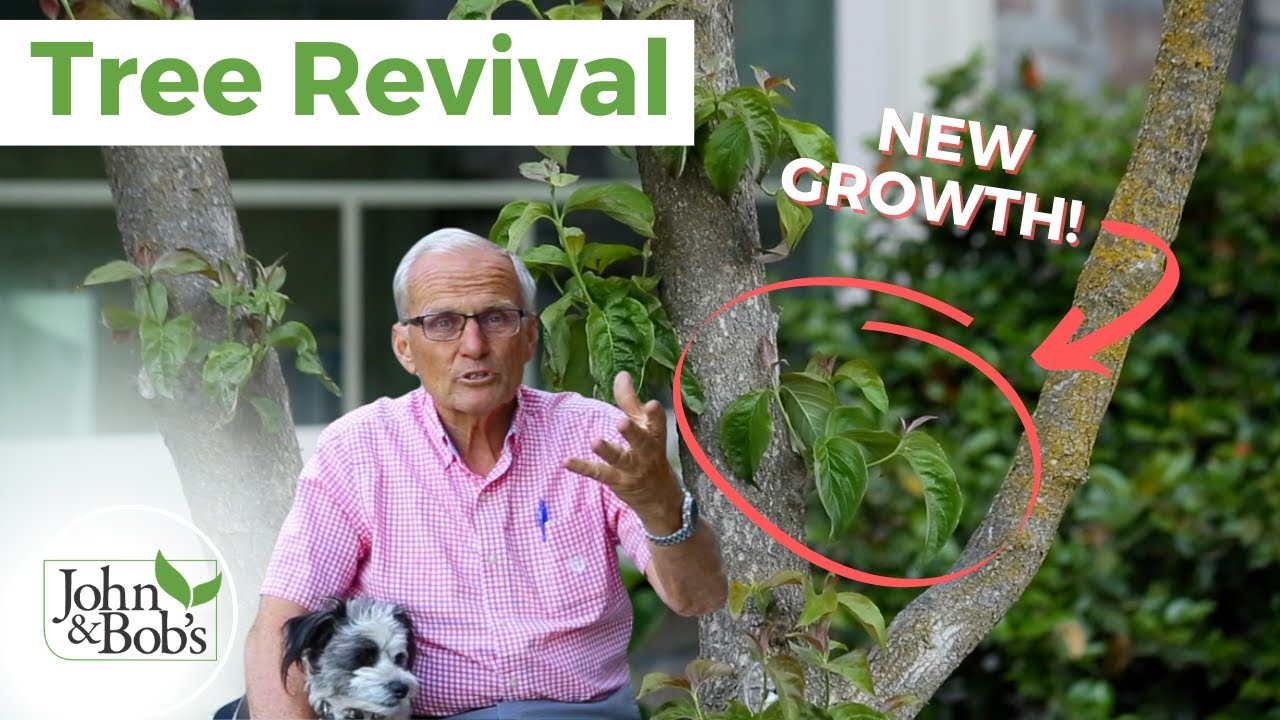To revive a dogwood tree, provide adequate watering and mulching, and remove any diseased or damaged branches. Ensure the tree is planted in well-drained soil and receives sufficient sunlight.
Planting companion plants that provide shade and protect the tree from harsh weather conditions can also aid in revival. Additionally, be cautious during pruning, as it can lead to stress and affect the tree’s health. By following these steps, you can successfully revive your dogwood tree and restore its vitality.

Credit: www.evergreenseeds.com
Signs Of A Dying Dogwood Tree
A dogwood tree in distress may show signs through dull or discolored leaves, a drastic leaf drop outside of its normal season, a thin or sparse canopy, and dead or brittle branches. These symptoms can indicate that the tree is dying and in need of revival.
To salvage the dogwood, you must identify and address the underlying issue. Start by assessing the tree’s overall health, checking for signs of pests, disease, or environmental stress. Ensure that the tree is receiving adequate water and sunlight, as these factors greatly impact its survival.
Pruning may be necessary to remove dead or diseased branches and promote new growth. Additionally, consider fertilizing the tree to provide essential nutrients. By taking these steps, you can revive your dogwood tree and restore it to good health.
Identifying The Cause Of Decline
Identifying the cause of decline in a dogwood tree is crucial for its revival. Common diseases affecting dogwood trees include powdery mildew, anthracnose, and dogwood blight. They manifest in leaf spots, cankers, and branches dying back. Pest infestations, like scales and borers, are evident through yellowing leaves and oozing sap.
Environmental factors, such as extreme temperature changes and improper watering, contribute to the decline. Insufficient sunlight can also weaken the tree. Nutritional deficiencies, particularly in magnesium, iron, or nitrogen, show symptoms in yellowing leaves and stunted growth. Recognizing these indicators is the first step to reversing the decline of a dogwood tree.
By addressing the underlying cause, providing proper care, and implementing appropriate treatments, the tree can be revived and restored to its vibrant and healthy state.
How to Revive a Dogwood Tree: Step by Step Guide
Revive A Dogwood Tree
Assess the dogwood tree’s overall health by checking for signs of disease, pests, or damage. Remove any dead or damaged branches through careful pruning. Treat any diseases or pest infestations that may be affecting the tree using appropriate methods and products.
Ensure that the tree receives proper nutrition and soil care by fertilizing and maintaining the soil pH. Implement adequate watering and irrigation techniques to keep the tree hydrated. Apply mulch around the base of the tree and work on improving the soil structure to provide optimal growing conditions.
Following these steps will help you revive your dogwood tree and promote its healthy growth.
Best Practices For Dogwood Tree Care
Reviving a dogwood tree requires regular maintenance and monitoring. Preventive measures can be taken to combat diseases and pests efficiently. Understanding the ideal growing conditions is vital for the tree’s health. Seasonal care tips, such as pruning and fertilizing, should be followed to ensure its well-being.
Additionally, proper drainage and air circulation play a crucial role in maintaining the tree’s overall health. By adhering to these best practices, you can revive and maintain the vibrancy of your dogwood tree for years to come.
Frequently Asked Questions About Reviving Dogwood Trees
A severely damaged dogwood tree may still be saved with proper care and attention. The recovery time for a dogwood tree can vary depending on the extent of the damage. The best time to revive a dogwood tree is during the tree’s dormant period in late winter or early spring.
Organic methods can be used to revive a dogwood tree, such as improving soil quality and providing adequate water and nutrients. However, alternative solutions for dogwood tree decline may also include pruning dead or diseased branches, managing pests, and preventing stress to the tree.
With patience and consistent care, a dogwood tree can be revived and regain its health and beauty.
Frequently Asked Questions On How To Revive A Dogwood Tree
How Do You Save A Stressed Dogwood Tree?
To save a stressed dogwood tree: 1. Identify the problem. 2. Fix any soil or nutrient issues. 3. Provide proper watering and pruning. 4. Consult a professional if needed.
Why Does My Dogwood Tree Look Dead?
Possible answer: Your dogwood tree may appear dead due to factors such as disease, pests, lack of water, or harsh weather conditions.
How Do You Treat A Sick Dogwood Tree?
To treat a sick dogwood tree, assess the problem, prune diseased branches, provide proper watering and nutrient care.
Why Are My Dogwood Leaves Turning Brown And Curling?
Dogwood leaves turn brown and curl due to fungal diseases, drought stress, excessive sunlight, or inadequate watering.
Conclusion
Reviving a dogwood tree requires careful attention and proper care. By following the steps outlined in this blog post, you can give your dogwood tree the best chance of recovering from any issues it may be facing. First, assess the tree’s overall health and identify any specific problems, such as pests or diseases.
Next, take action by implementing appropriate treatments, such as using insecticides or pruning affected branches. In addition, make sure to provide the tree with adequate water, nutrients, and sunlight to promote its growth and vitality. Regularly monitoring the tree’s progress and making adjustments as needed will help ensure its successful recovery.
Remember, patience is key as it may take some time for the tree to fully bounce back. With care and attention, your once struggling dogwood tree can be revived to its full splendor, bringing beauty and joy to your outdoor space.

